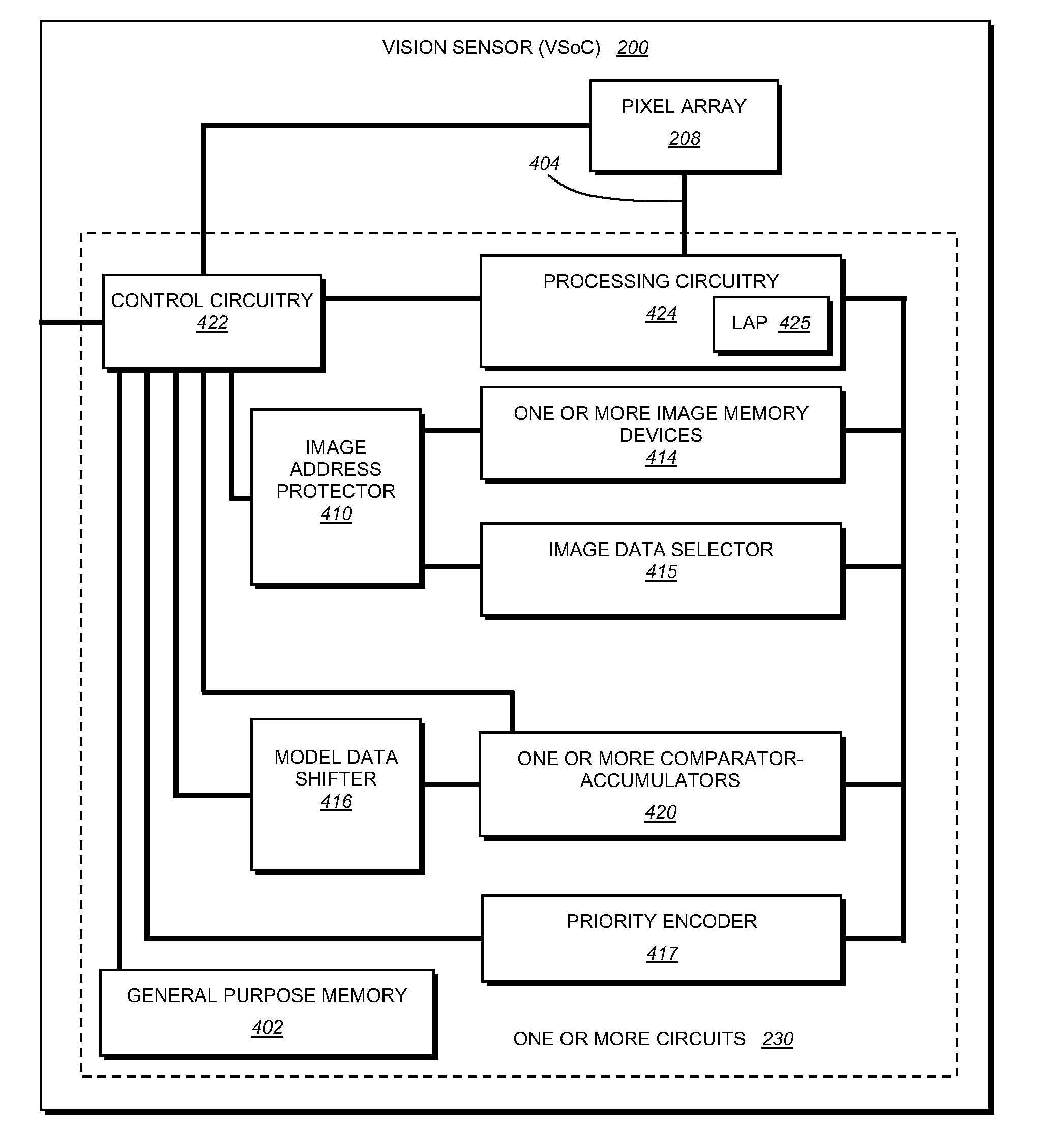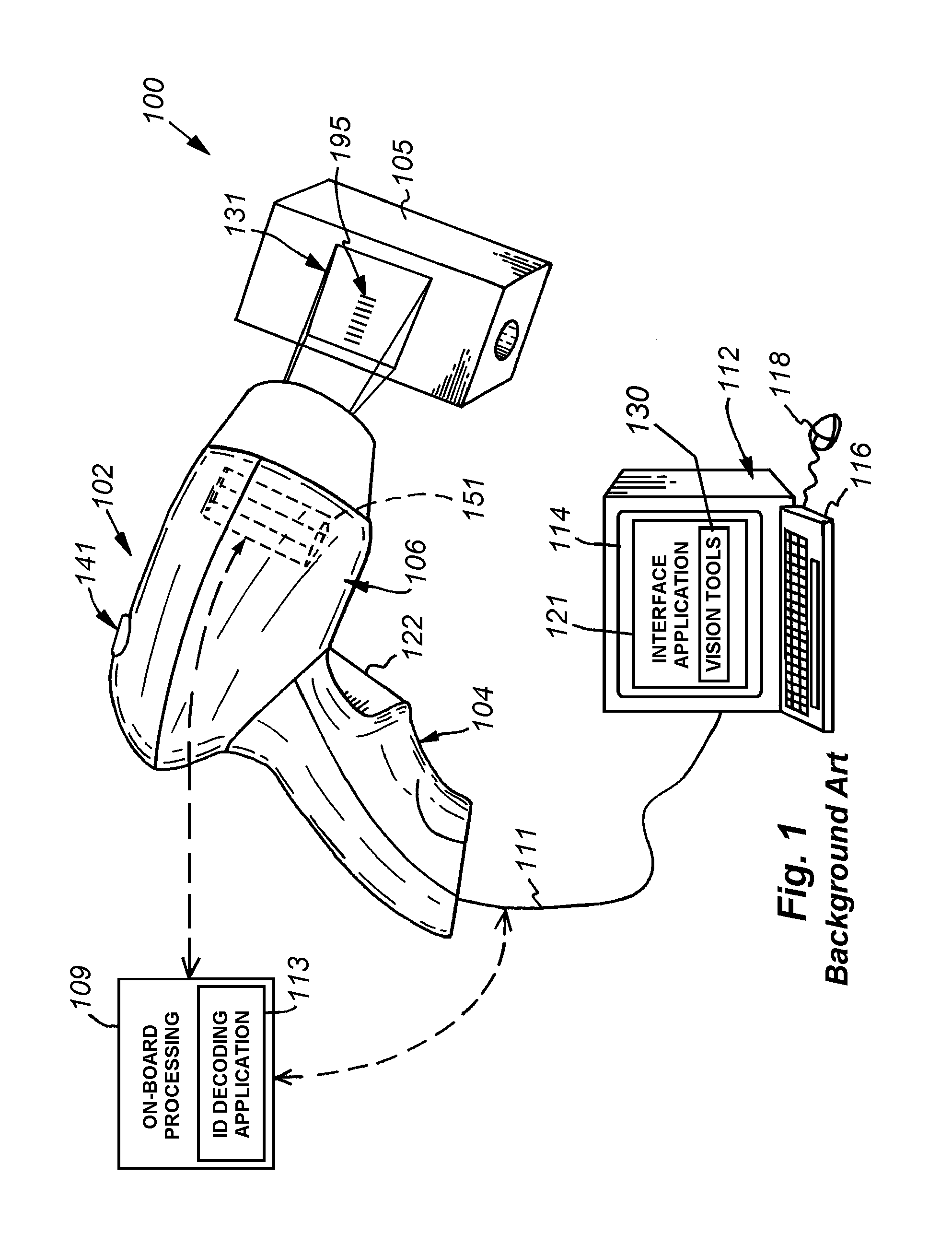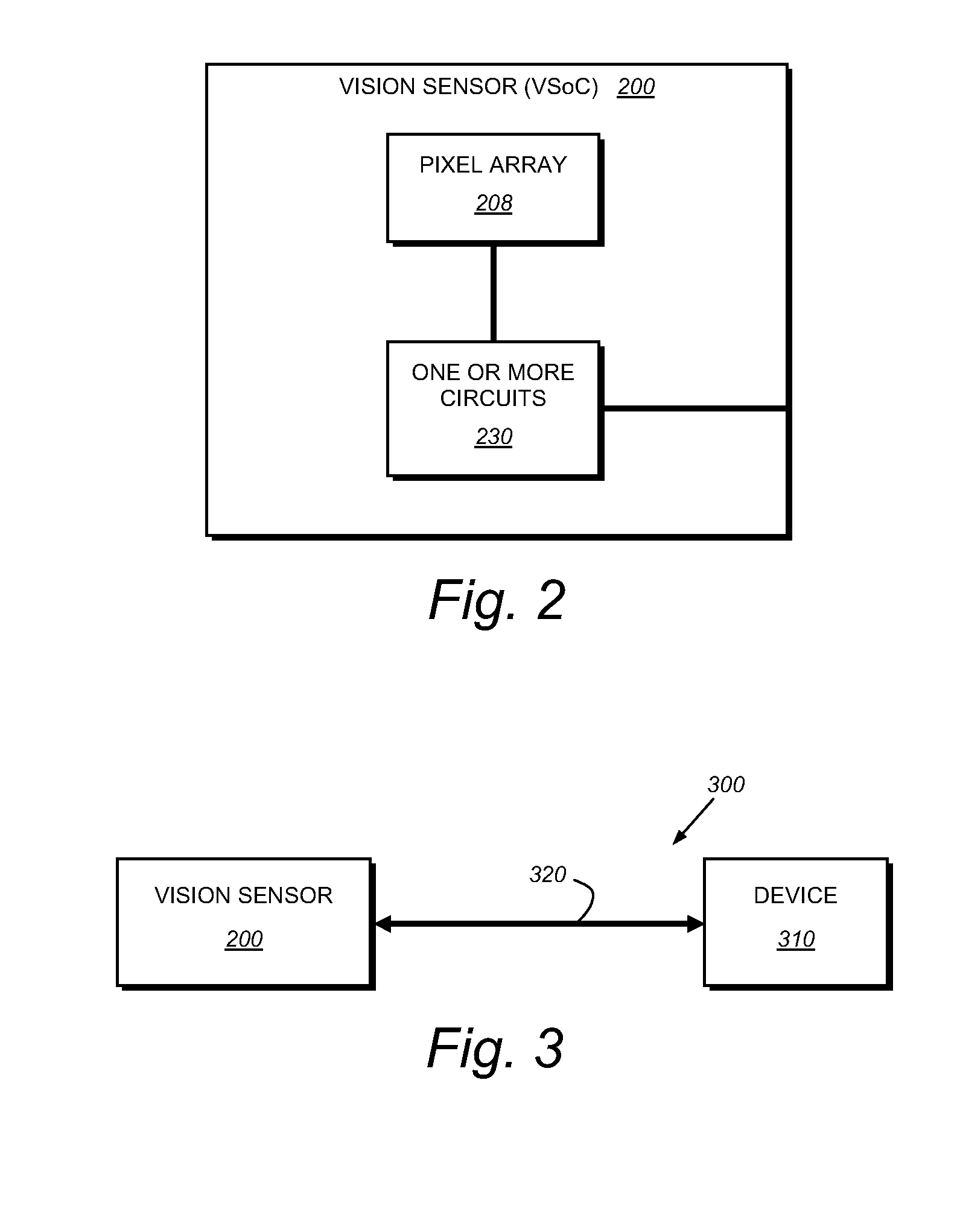System and method for capturing and detecting symbology features and parameters
a symbology and feature technology, applied in the field of symbology readers, can solve the problems of difficult to provide such a trigger, increase the difficulty of barcode movement in a fashion, and inability to generate reliable triggers, etc., and achieve the effect of optimizing the efficiency of lap in neighborhood operations
- Summary
- Abstract
- Description
- Claims
- Application Information
AI Technical Summary
Benefits of technology
Problems solved by technology
Method used
Image
Examples
Embodiment Construction
[0039]The system and method for capturing, detecting, identifying and extracting ID / barcode features according to illustrative embodiments is adapted to operate with a processor that defines an architecture capable of processing an entire row of data read-out from an interconnected pixel array in a discrete processing cycle (i.e. all data in a row being simultaneously processed with each clock cycle). To accomplish this, the overall VSoC processor is organized to include a wide on-bit data bus (for example a 1024×1 bus) between an image data storage memory (also having a storage array that is 1024 wide) and the pixel array (in this example, a 1024×768 pixel array with 8-bit or 6-bit pixels). This memory is interconnected by another similarly wide (1024×1, for example) bus to the image processing component, which is organized to process the entire row simultaneously using, for example, single-instruction, multiple-data (SIMD) processors that are very efficient at neighborhood operati...
PUM
 Login to View More
Login to View More Abstract
Description
Claims
Application Information
 Login to View More
Login to View More - R&D
- Intellectual Property
- Life Sciences
- Materials
- Tech Scout
- Unparalleled Data Quality
- Higher Quality Content
- 60% Fewer Hallucinations
Browse by: Latest US Patents, China's latest patents, Technical Efficacy Thesaurus, Application Domain, Technology Topic, Popular Technical Reports.
© 2025 PatSnap. All rights reserved.Legal|Privacy policy|Modern Slavery Act Transparency Statement|Sitemap|About US| Contact US: help@patsnap.com



